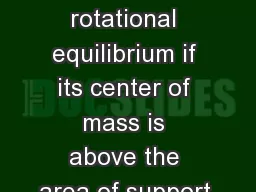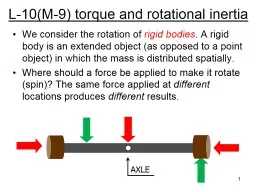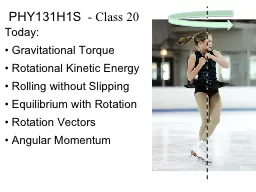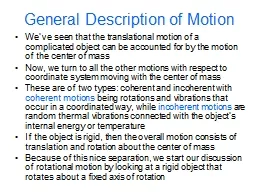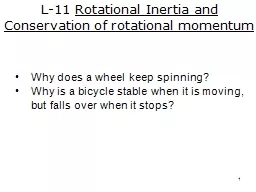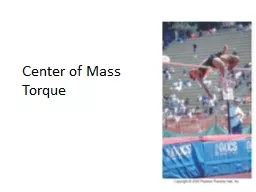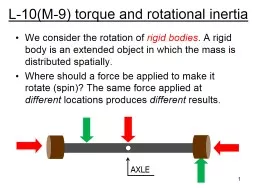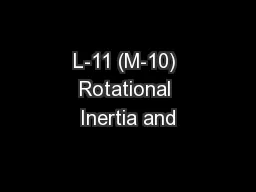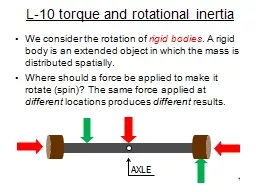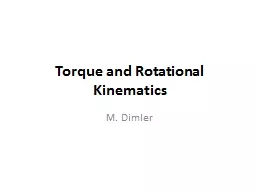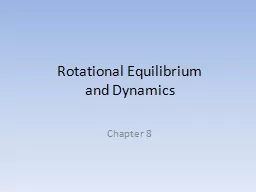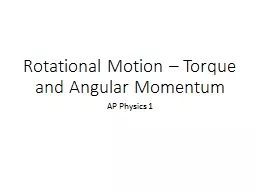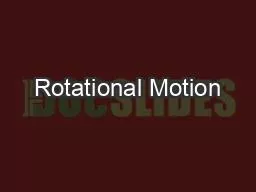PPT-An object will remain in rotational equilibrium if its center of mass is above the area
Author : giovanna-bartolotta | Published Date : 2018-10-28
What determines whether an object will rotate when a force acts on it Why doesnt the Leaning Tower of Pisa rotate and topple over What maneuvers does a falling
Presentation Embed Code
Download Presentation
Download Presentation The PPT/PDF document "An object will remain in rotational equi..." is the property of its rightful owner. Permission is granted to download and print the materials on this website for personal, non-commercial use only, and to display it on your personal computer provided you do not modify the materials and that you retain all copyright notices contained in the materials. By downloading content from our website, you accept the terms of this agreement.
An object will remain in rotational equilibrium if its center of mass is above the area: Transcript
Download Rules Of Document
"An object will remain in rotational equilibrium if its center of mass is above the area"The content belongs to its owner. You may download and print it for personal use, without modification, and keep all copyright notices. By downloading, you agree to these terms.
Related Documents

